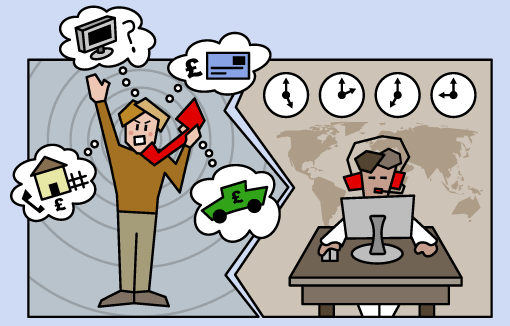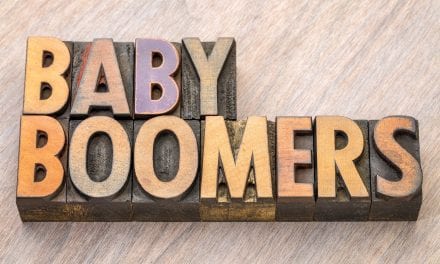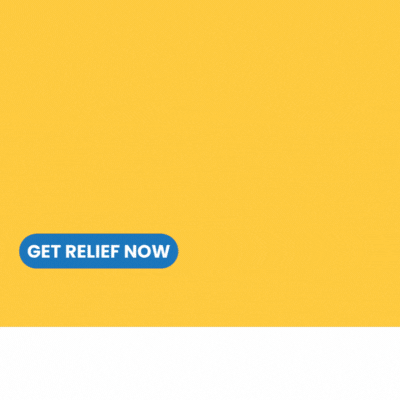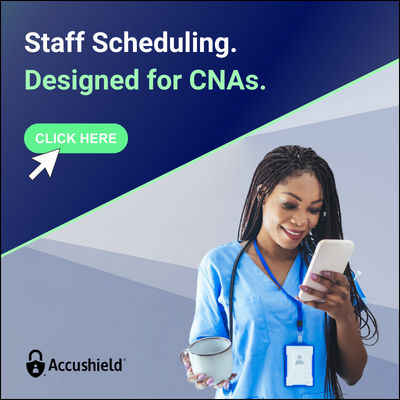There is a lot of technology floating around the senior living world and yet, with the possible exception of computer based, wireless call systems, the adoption rate is very low.
Do activity sensors have practical value? . . . is the ultimate question that my friend Leslie Kernian, MD asks in her articled titled “Will Activity Sensors In Home Help Mom” This question is really an introduction to the even more fundamental technology question senior living needs to tackle:
How do we really make technology work in the senior housing environment?
There is no shortage of people and organizations working on this problem and we are seeing more and more senior living communities implementing some newer forms of technology that include wireless emergency call systems, various resident portal video systems and wireless networks. This is an area that I am particularly interested in for two reasons:
- I am fascinated by new technology and if I had buckets of money, I would be an early adopter of all kinds of technology, but my bank account is just not big enough (though I know a couple of people who are early adopters and they have some really cool stuff.)
- The second is that in my role as a business development officer for Vigil Health Solutions I am always kind of bugged with our tag line “Vigil improves the life of seniors through creative technology” since essentially all we do is emergency call systems in spite of the fact that our tag line seems to promise more.
Recently I sat down with Steve Smith the VP of development for Vigil to talk about technology and senior housing. My first question for him was what gives with the Vigil tagline and what we do? The Technology Conundrum Steve Smith responded that in fact, Vigil is a technology leader with the Vigil Dementia System which is really the only comprehensive system that allows you to continuously monitor the safety of dementia residents at night or when they are in their rooms. He then went on to listed 4 additional challenges we have in the adoption of technology for seniors:
- Cost – The reason that cell phones, iPods, Android tablets, fax machines and digital cameraw are so relatively inexpensive is because millions of them are sold. This means lower production costs and that development costs can be spread over millions of units. As big as the senior market is, there is no comparison in terms of the number of units made and sold.
- Technology Aversion – In truth, senior community operators are largely technology adverse. Some of this is likely because their natural focus is either real estate development or the care of residents with technology being something that has been largely forced on them.
- Complexity – The biggest challenge that comes with technology is that it frequently adds complexity to our lives. This complexity means more things that can go wrong; there is a longer and steeper learning curve and in truth more things that can break.
- Cool to Valuable – There are a bunch of people who are working on cutting edge technology for seniors. This includes the LINKTank Competition that is focused on finding the next great senior focused technology. Yet for all of that, it is less clear that this cool emerging technology provides real practical value to seniors and senior providers.
Future Articles
Over the next few months I will continue to explore with you Steve Smith’s thoughts on technology and the senior housing industry. The next article will focus very specifically on sensor technology. What are your thoughts about technology in the senior living space? Where do you think things are going? Are you an early adopter of anything and how is that going or how did it go? Steve Moran









It is true that many senior communities are hesitating to embrace new technology, but we see that changing. This is especially true if the technology directly enhances the quality of life of the residents. Our organization Senior Learning Network provides lifelong learning opportunities to older adults by the use of video conferencing. Though the seniors are not directly logging on the computer software for the video conference, they definitely see the value. We are finding that as the seniors realize that they can connect and learn, they are asking the management of the senior communities to provide the broadband access to allow for the video conferences. We are thrilled that technology resistance is changing and the owners and developers of senior communities are jumping on the technology bandwagon.
There is still a good number of retirement communities apprehensive about technology adoption, but the trend looks promising. As an example, below is quote from CEO of Brookedale Senior Living Andy Smith about the future of Assisted Living from the recent ALFA publication.
“Today’s residents want to ‘remain more connected with their families and with the world,’ he says, ‘and modern technology plays a dominant role in enabling those connections. The senior living industry must adapt and embrace technology as an enhancement to the services we provide our residents, and as a tool for better managing resident care.’ Brookdale already is making strides in that direction by providing WiFi in all of its communities and by moving forward with systems for maintaining electronic medical records.
Click here if you want to view the entire publication: http://mobileservices.texterity.com/alfapublications/july_august_2013/?folio=18&lm=1372701536000&article_id=307242&linkImageSrc=%2Falfapublications%2Fjuly_august_2013%2Fdata%2Fimgpages%2Fmobile_tn2%2F0020_iryjnq.png#pg22
Our solution VideoCare (www.VideoCare.com), which allows seniors to connect with loved ones via video-calling, emailing, sharing photos/videos and more with computer knowledge required, is dependent on internet connectivity. Properties like Vintage and Sunrise are also standardizing WiFi throughout their properties, but others are just slowly starting.
Hi Steve – thanks for your thoughtful article and for summarizing some of the main issues around technology adoption. Independa CMO, Dr. Richard Della Penna is a thought-leader who is talking about the convergence of person-centered care and technology. You and your readers may be interested in this blog post about his recent presentation at California Leading Age. http://independa.com/mixing-person-centered-care-technology-oxymoron-absolutely-not
Yes, it might be true that older people are more hesitant to use technology than any other age group there is. However, the use of technology to maximize their comfortability can never be expressed fully by a few demos and such. In a recent study by the Challenging Obstacles and Barriers Assisted Living Technology, it is revealed that older adult are starting to appreciate modern technology more than ever. Mobile phones, computers and digital cameras are among the most frequent gadgets that older adults kept on mentioning because “it enables them to keep doing things that are important to them and meets their needs.” I actually read these kinds of materials on complete long-term care.
Relationships are the key to success in the assisted living business. The better we know the residents the better we serve them. When staff is aware of resident likes and dislikes, preferences and schedules, the resident feels respected. Taking it a notch higher, the ultimate goal is to know each resident’s spirit. At AmericanWay we have found a tool that allowed us to jump to a higher plane on the know-the-residents scale. Just like Facebook has provided a way for us baby boomers to stay in touch with all of our long-lost cousins and old high school friends, we can now use electronic medical records in a way that goes beyond the medical. We have implemented the ExtendedCare Professional (ECP) software in all of our assisted living homes. Beyond storing medical data, we can now quickly update all staff members on anything and everything. If a family member wants a glass of water by their loved one’s bedside at night, we can include it in the staff members’ task list. If a resident wants to sit with a particular friend at the lunch table, we can make sure everyone knows. Doctor’s appointments, a penchant for music, appreciates hugs – no matter what, we can get the word out consistently and quickly. There was a time when people feared that technology would eliminate the human touch. As it turns out, technology greatly enhances our ability to provide unique, individual, loving care. Steve, I strongly urge you to contact Joel Moyer at ECP to hear about the ECP approach to medical records. ECP scores well on Steve Smith’s four challenges. It is affordable, fun, simple and I’ve already disclosed my thoughts about how valuable it is. I’m sure Joel won’t mind my sharing his email address: [email protected]. At AmericanWay we are in the early stages of tapping the huge potential this product offers. This type of technology is going to revolutionize the business of assisted living.
Steve:
Great discussion topic. As a risk management specialist in the industry, I have been pushing the Vigil System for going on 10 years now. I personally believe providers should use technology to differentiate from their competition. A simple example of this is if I am looking to place my loved one in a Memory Care community, I would choose the provider who had the Vigil System, hands down.
One also has to realize that hospitals are driving the ACO model which are driven primarily to negate hospital readmissions. If your building has sensor technologies to say alert staff when a resident does something out of the norm (out of bed, too long in the bathroom), hospital discharge planners will find your community if favor of your competition.
I’ve seen quite a few companies providing technology to communicate with family members, medication reminders, even telehealth services. This is the future…..should be exciting.
I don’t think the senior housing industry (as a whole) incorporates technology strategy and architecture into its thinking and the result of that are all of the technologies that have come (and gone) that were not adopted. One might argue that sensors and web cameras fall into that category.
http://www.ageinplacetech.com/blog/do-contests-propel-innovation-industry-lacks-infrastructure
From linkedIn Groups
At the heart of technology adoption is standardization. if the systems had a common data transfer platform, then the expense to the adoption of this type of technology would be a matter of software applications, which would lead to lower costs. Today, the manufacturers of sensor devices and their integration platforms are building such systems using a silo mentality, hoping to capture more downstream revenue from “system” development. Open software architecture, for data transfer, and a new focus on best practice development for each piece of the product will lead to lower costs and faster adoption timelines.
By Timothy Carmichael, MBA,MS,CASP
From LinkedIn Groups
Adapting technology is definetely something that needs to happen. I have left a job running IT to work in the Senior Care sector. Thanks for the link to the website. Really interesting.
By Daksha Bhat
From LinkedIn Groups
When I was the Authority Having Jurisdiction (AHJ) for the State of Maryland, 1988 to 2007 I was asked by a Baltimore County CCRC to allow wireless nurse call system. We worked with the state licensing agency and for six months this facility showed us just how much better the wireless system is the the current view most still have. We just have to show through examples that the wireless system is so much better than the wired system
By Brian Madden Dubey, AIA, ACHA, AHJ
From LinkedIn Groups
Relationships are the key to success in the assisted living business. The better we know the residents the better we serve them. When staff is aware of resident likes and dislikes, preferences and schedules, the resident feels respected. Taking it a notch higher, the ultimate goal is to know each resident’s spirit. At AmericanWay we have found a tool that allowed us to jump to a higher plane on the know-the-residents scale. Just like Facebook has provided a way for us baby boomers to stay in touch with all of our long-lost cousins and old high school friends, we can now use electronic medical records in a way that goes beyond the medical. We have implemented the ExtendedCare Professional (ECP) software in all of our assisted living homes. Beyond storing medical data, we can now quickly update all staff members on anything and everything. If a family member wants a glass of water by their loved one’s bedside at night, we can include it in the staff members’ task list. If a resident wants to sit with a particular friend at the lunch table, we can make sure everyone knows. Doctor’s appointments, a penchant for music, appreciates hugs – no matter what, we can get the word out consistently and quickly. There was a time when people feared that technology would eliminate the human touch. As it turns out, technology greatly enhances our ability to provide unique, individual, loving care. Steve, I strongly urge you to contact Joel Moyer at ECP to hear about the ECP approach to medical records. ECP scores well on Steve Smith’s four challenges. It is affordable, fun, simple and I’ve already disclosed my thoughts about how valuable it is. I’m sure Joel won’t mind my sharing his email address: [email protected]. At AmericanWay we are in the early stages of tapping the huge potential this product offers. This type of technology is going to revolutionize the business of assisted living.
By Janis Nowak
From LinkedIn Groups
Wireless is our standard for ILU, ALF, and SNF. However, with technology changing so rapidly these days, those systems we selected just 3 years ago are no older technology. We are looking at moving from “reactive” type emergency call to “predicitive”, but the base issue is the affordability of the backbone. WiFI? RF? Zygbee?
By Mark Schoedel
Modern Technology is a prime factor in connecting us with our family,friends and outer world.It creates a positive impact in our life,especially the senior living community who long to connect with their loved ones via social networking sites where they can post comments and share photos/videos,skype,emailing or mobile phone conversations.With basic computer knowledge and availability of internet connectivity,they can add colour to their life by adopting these simple technology provided facilities which could spring a miracle change in their otherwise deserted,lonely life.Other technological services like emergency call systems,sensor technologies to alert staff,medication reminders are also a great source of help.
This was the most valuable discussion I have seen recently. Laurie Orlov’s comment summed up the situation, no overall adaption of technology, but useful examples and opportunities for technology were given. The ideas nd methods for adaption are there, and companies are producing valuable and creative products. There is even an organization of manufactures. What is needed is a connection between suppliers and users and their families, and an encouragement, such as a tax break. I have been observing the use of technology for elderly for many years and edited a journal issue on this. I have a center (in formation) for technology and cognitive health of older persons to watch this and am involved in research with a group of professors in the United States, England, and Australia. I also encourage more comments and ideas.
Thank You
Gene, thanks for joining the confirmation. There are many many people and organizations working on new technology solutions for seniors. Most will fail, but there will be some big winners, I hope/think. The one challenge that will remain is the cost of manufacturing particularly for seniors living in non home settings because the total market in the US is maybe 2 million people which for electronics is not very big.
Steve
Thank you for mentioning the LINKTank Competition. I believe a major hindrance to development for many entrepreneurs and startups, whether healthcare/geriatric related or not, is that they’re not aware of all the opportunities for them to receive non-equity funding.